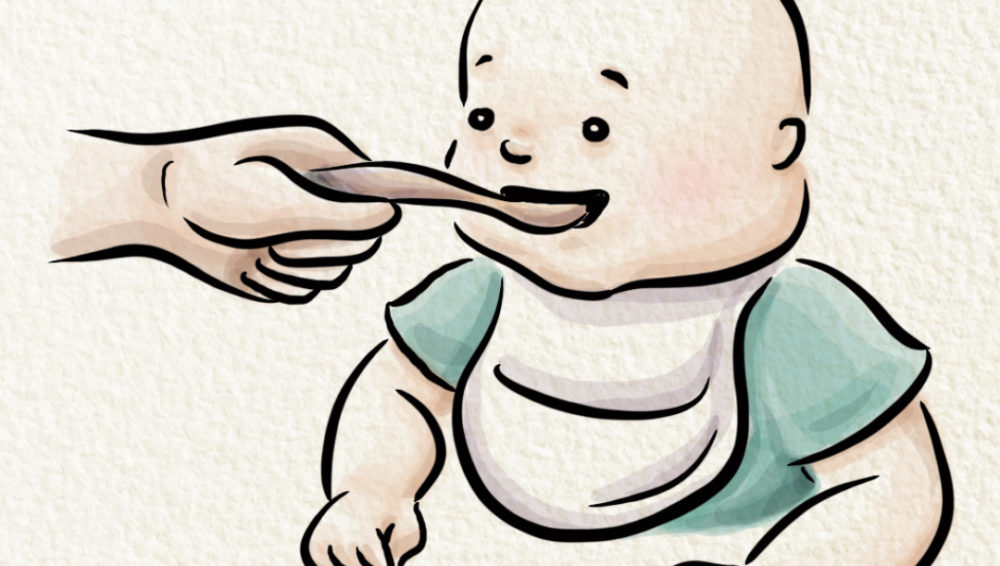Month 6: Introduction of solid food

This month is very significant. It coincides with the beginning of many important developmental milestones, such as crawling, eating solid food, and combining naps.
You will be welcoming many interesting memories.
How are you and your baby
Your baby’s doctor might have scheduled a checkup and vaccination this month. Be sure to check Your Child’s health records.
Your Child will be showing lots of expressions and making sounds to get attention and satisfy needs — this will be the most prominent way of communication from now on.
At this age, most babies start eating solid foods as complimentary meals to breastmilk or infant formula. To get ready for feeding themself, your baby will be practicing motor skills, such as sitting without support, maintaining strong neck control, and bringing things to their mouth with their hand. Apart from the benefits of creating eating habits, this development of core muscles and body balance is crucial to crawling, which may happen soon.
You will be busy preparing food for the little one, figuring out the likes and dislikes, and learning to look for signs of food allergies and food intolerance.
What are solid foods
Since birth, Your Child has been drinking breast or formula milk. However, once they reach this age, babies will usually want to feed on other food sources for more nutrients to support their growing body and brain — these forms of food are called solid foods.
How to introduce solid foods
Puree: Many parents choose to start with a semisolid form of food. They cook basic foods, like carrots, oatmeals, or potatoes, and mash them into a fine puree that can be spoon-fed to the baby. You can mix ingredients, but purees made from a single ingredient allow you to identify potential allergies and discover Your Child’s preferences. Parents often choose purees to ensure adequate nutrition and lower the risks of choking.
Baby-led weaning (BLW): BLW is gaining popularity among modern parents as it requires less preparation and cleaning while supporting the development of motor skills. Instead of spoon-feeding them, babies are given wholly, bite-size, softly-cooked foods such as baby carrots and stalks of broccoli. The baby has to pick up the food and bring it to the mouth by themself. And they will have to chew and swallow the coarser texture of foods. Advocates of this method claim that BLW promotes good eating behavior, reduces chances of excessive weight gain, and creates pleasant eating memories as the baby chooses which food to eat by themself. However, this method poses the risk of choking. If you choose to use BLW, watch Your Child closely while eating and learn the basic first aid practice on choking infants.
Why you should slowly introduce solid foods to your baby
Whichever method of introducing solid foods you choose, eating at this stage should be considered a way to get your baby acquainted with chewing and swallowing different flavors and textures — not the primary source of nutrition.
Giving a pleasant experience of eating and learning how to eat independently should be your main goal. So, introducing solid food to your baby a little at a time does not only give Your Child enough time to adjust to eating but is also beneficial in weeding out potential allergic reactions to certain foods.
Verified:
Dr. Ketsupa Jirakarn (Mental health specialist) (18 February 2022)



